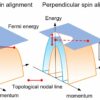Computational imaging has the potential to revolutionize optical imaging by providing wide field-of-view and high-resolution capabilities. Joint reconstruction of amplitude and phase—known as “coherent imaging or holographic imaging”—expands the throughput of an optical system to billions of optically resolvable spots. This breakthrough enables researchers to gain crucial insights into cellular and molecular structures for biomedical research.
Despite the potential, existing large-scale coherent imaging techniques face challenges for widespread clinical use. Many of these techniques require multiple scanning or modulation processes, resulting in long data collection times to achieve a high resolution and signal-to-noise ratio. This slows down imaging and limits its feasibility in clinical settings due to tradeoffs among speed, resolution, and quality.
Recent image denoising methods offer a potential solution by using denoising algorithms during iterative reconstruction to enhance imaging quality with sparse data. However, conventional methods are computationally complex, while deep learning-based techniques have poor generalization and sacrifice image details.
In a study reported in Advanced Photonics Nexus, a team of researchers from the Beijing Institute of Technology, the California Institute of Technology, and the University of Connecticut demonstrated a complex-domain neural network that significantly enhances large-scale coherent imaging. This opens new possibilities for low-sampling and high-quality coherent imaging in various modalities.
The technique exploits latent coupling information between amplitude and phase components, leading to multidimensional representations of complex wavefront. The framework shows strong generalization and robustness across various coherent imaging modalities.
The researchers constructed a network using a two-dimensional complex convolution unit and complex activation function. They also developed a comprehensive multi-source noise model for coherent imaging, encompassing speckle noise, Poisson noise, Gaussian noise, and super-resolution reconstruction noise. The multi-source noise model benefits the domain-adaptation ability from synthetic data to real data.
The reported technique was applied to several coherent imaging modalities, including Kramers-Kronig relations holography, Fourier ptychographic microscopy, and lensless coded ptychography. Extensive simulations and experiments showed that the technique maintains high-quality reconstructions and efficiency while significantly reducing exposure time and data volume—by an order of magnitude.
The high-quality reconstructions offer significant implications for subsequent high-level semantic analysis, such as high-accuracy cell segmentation and virtual staining, potentially fostering the development of intelligent medical care.
The potential for rapid, high-resolution imaging with reduced exposure time and data volume holds promise for real-time cell observation. Additionally, by combining artificial intelligence diagnosis, this technology may unlock the secrets of complex biological systems and push the boundaries of medical diagnostics.
More information:
Xuyang Chang et al, Complex-domain-enhancing neural network for large-scale coherent imaging, Advanced Photonics Nexus (2023). DOI: 10.1117/1.APN.2.4.046006
Citation:
Complex-domain neural network advances large-scale coherent imaging (2023, July 27)



